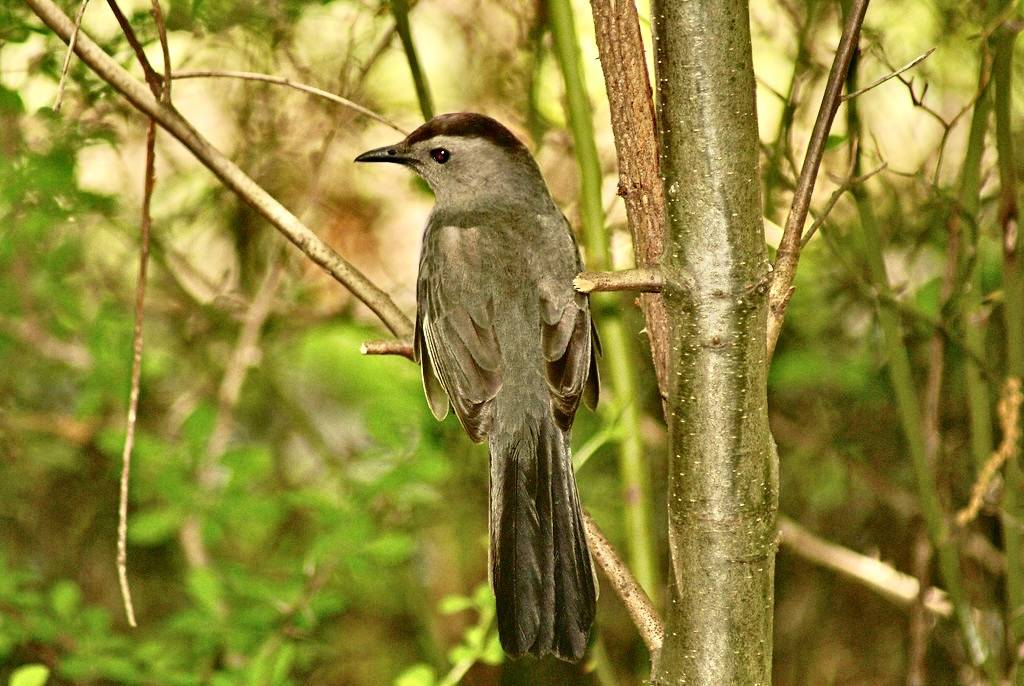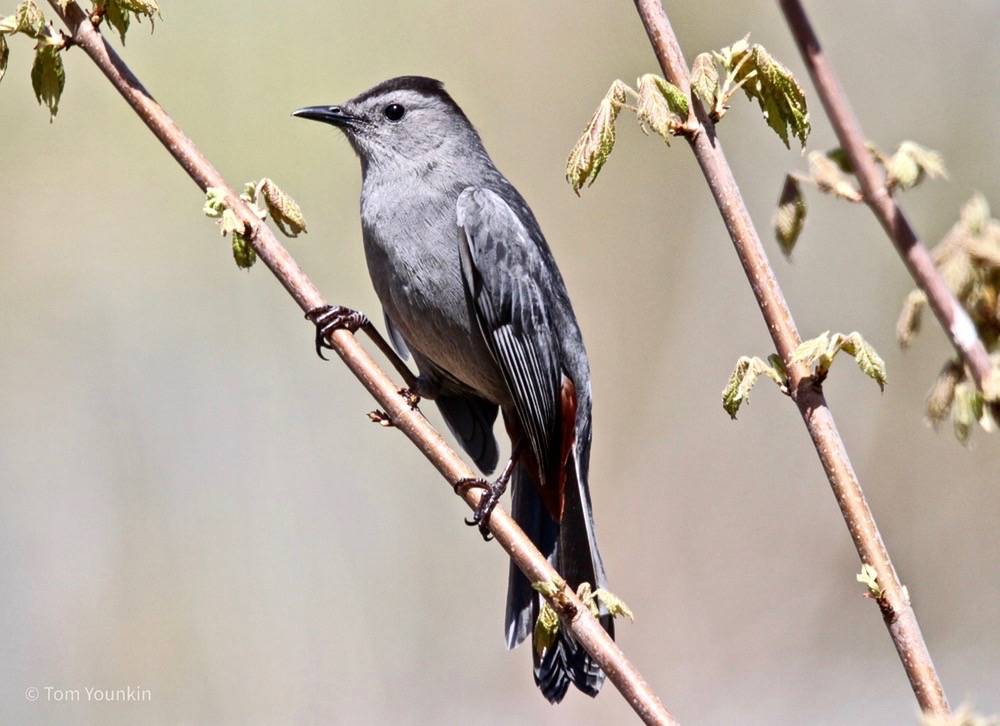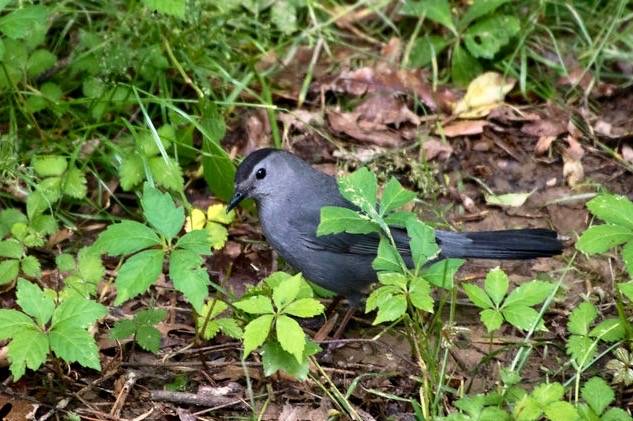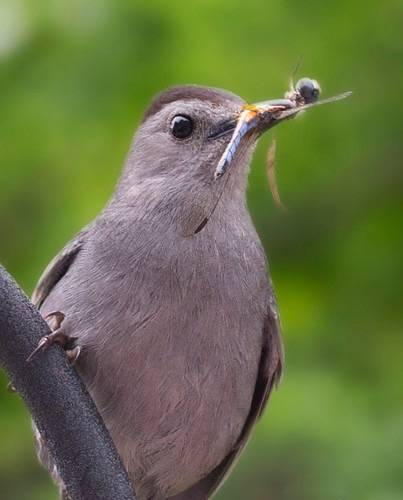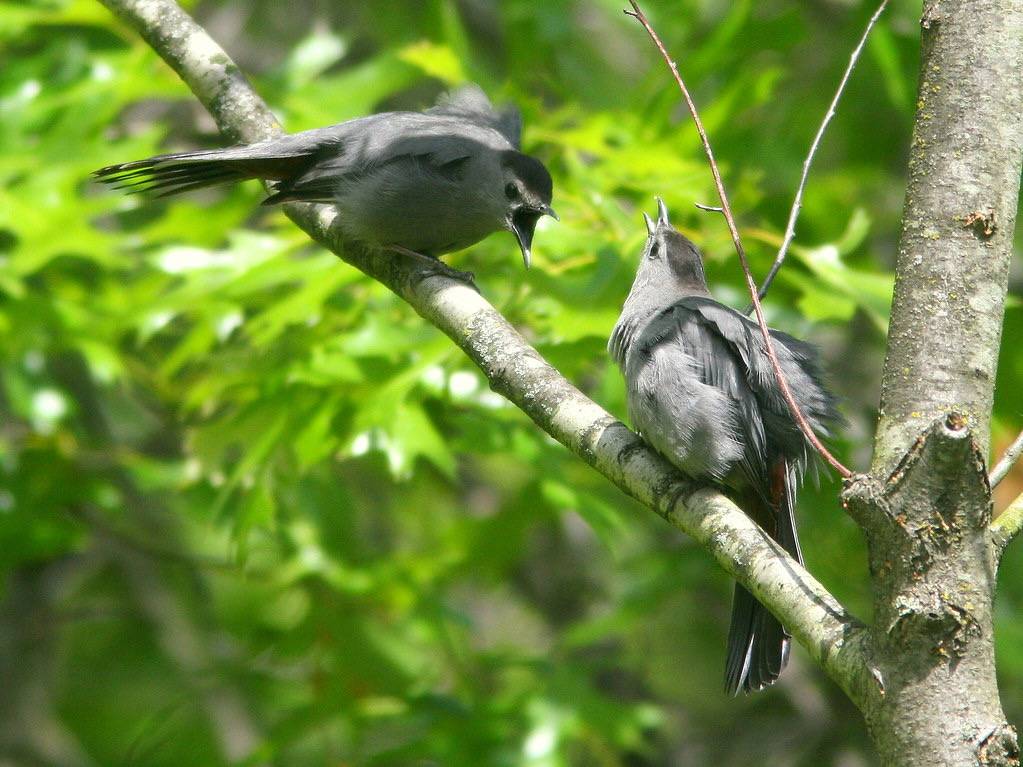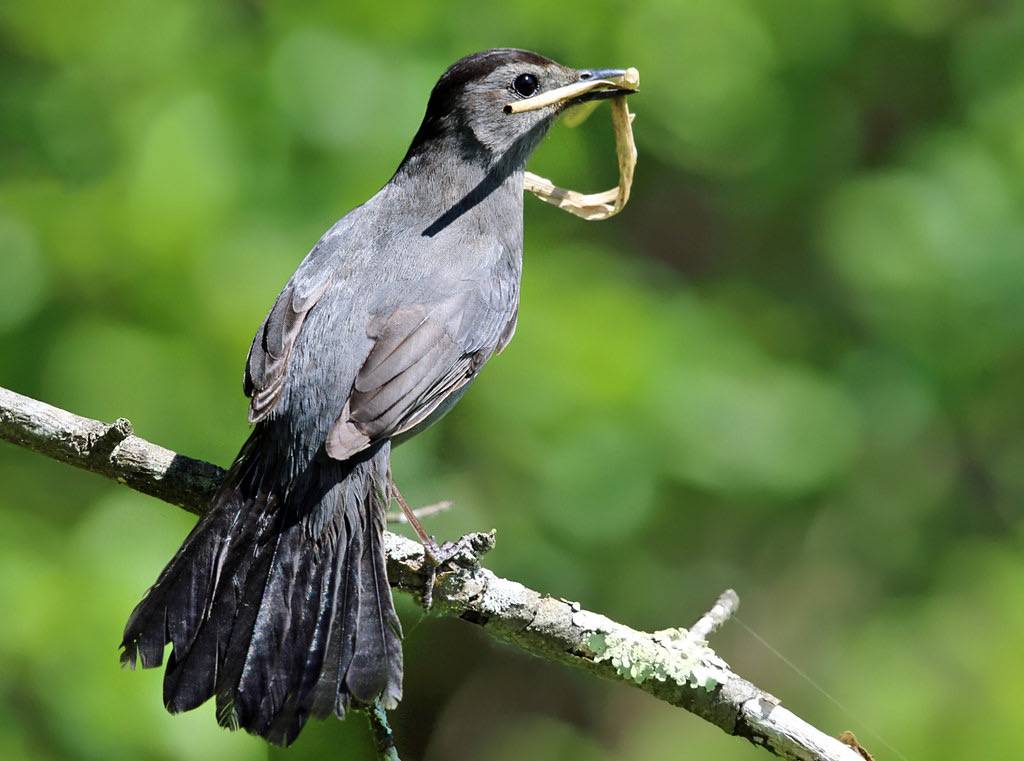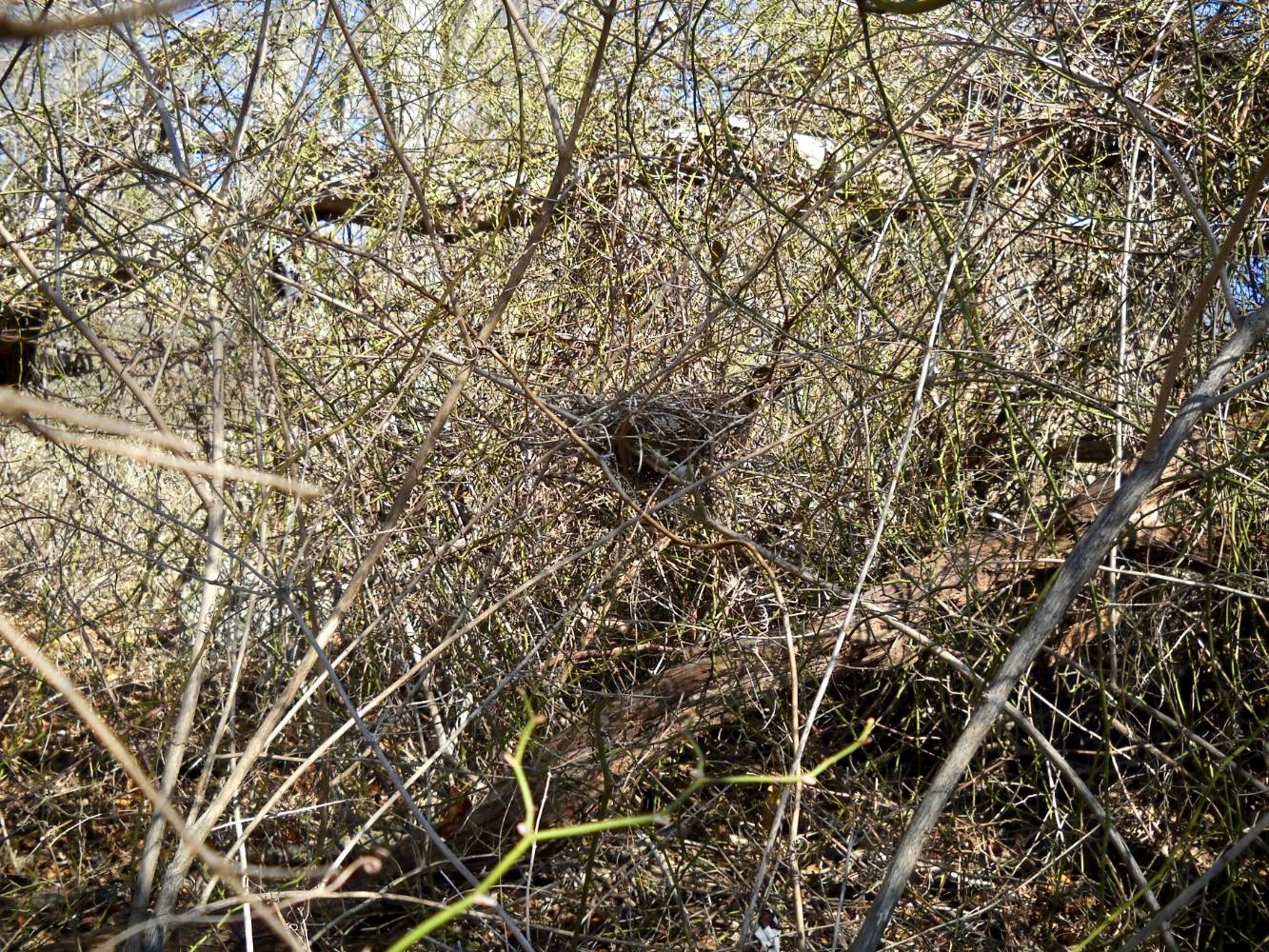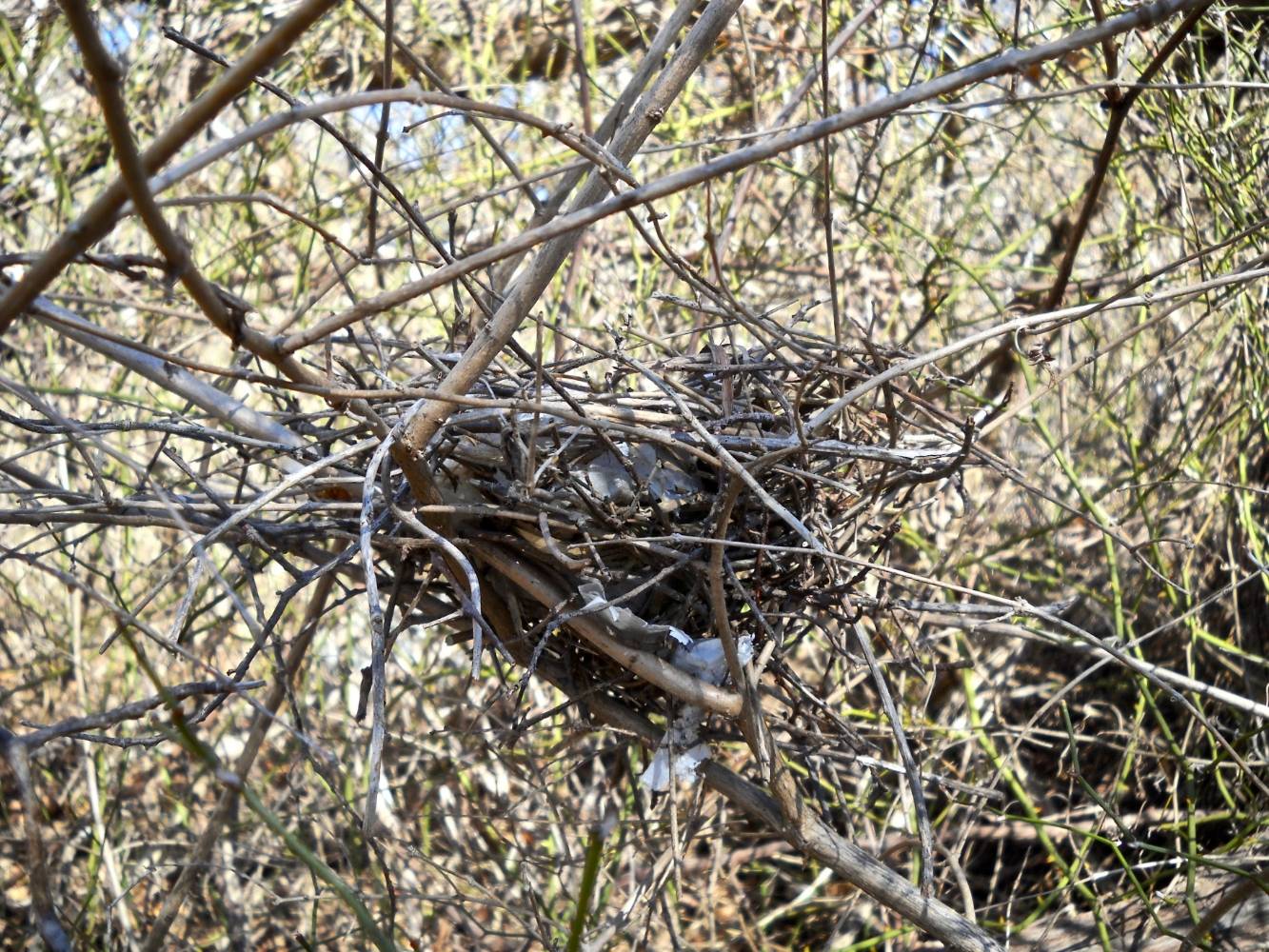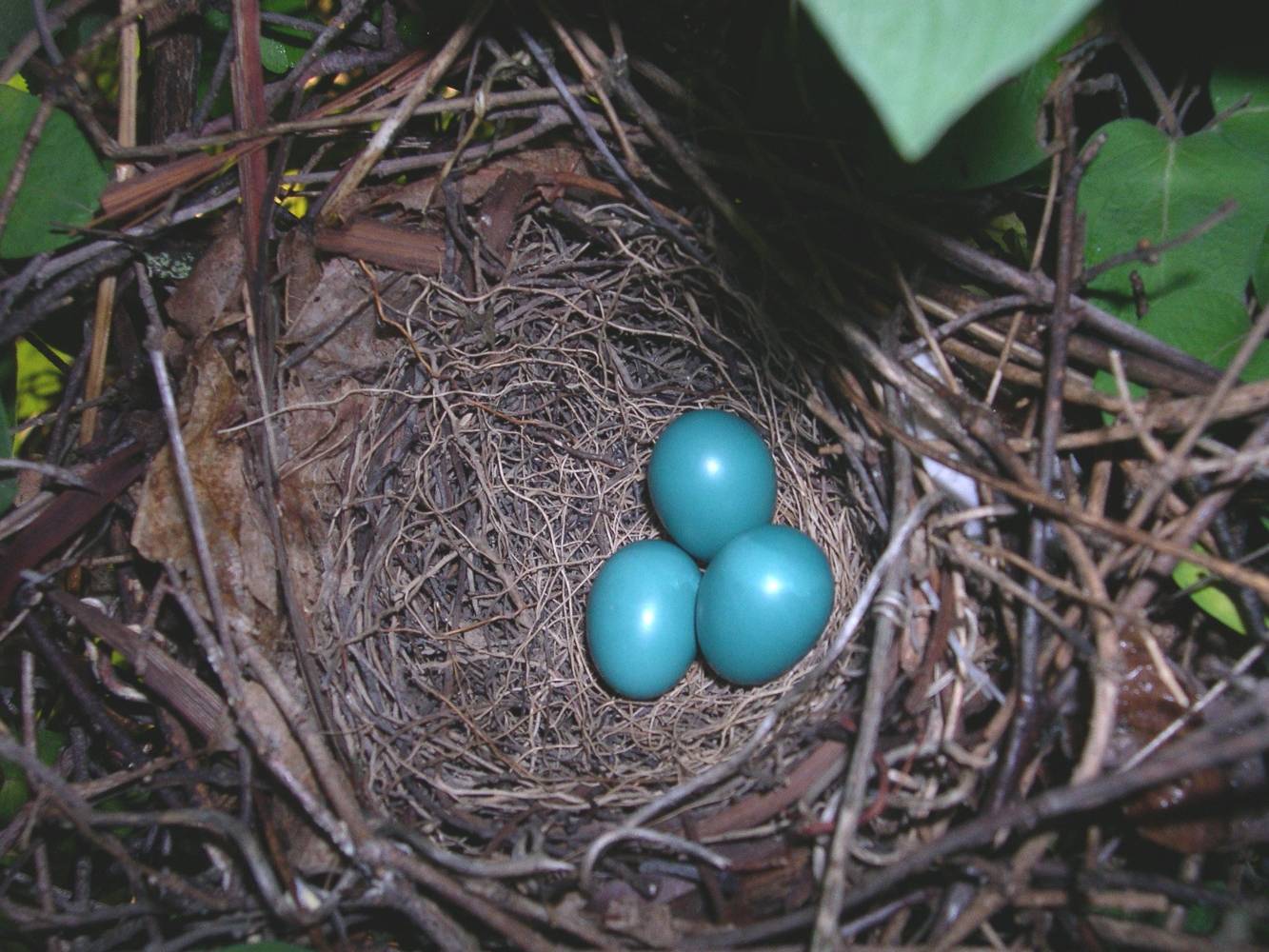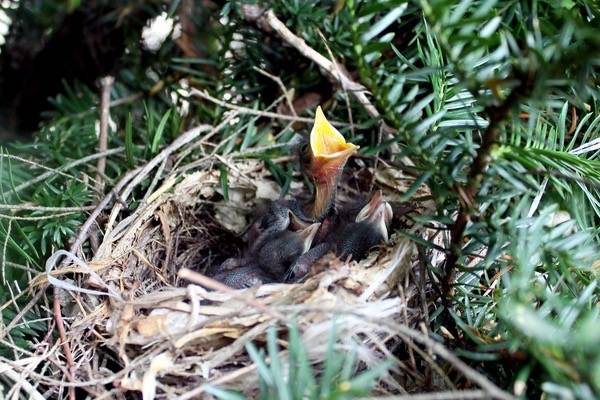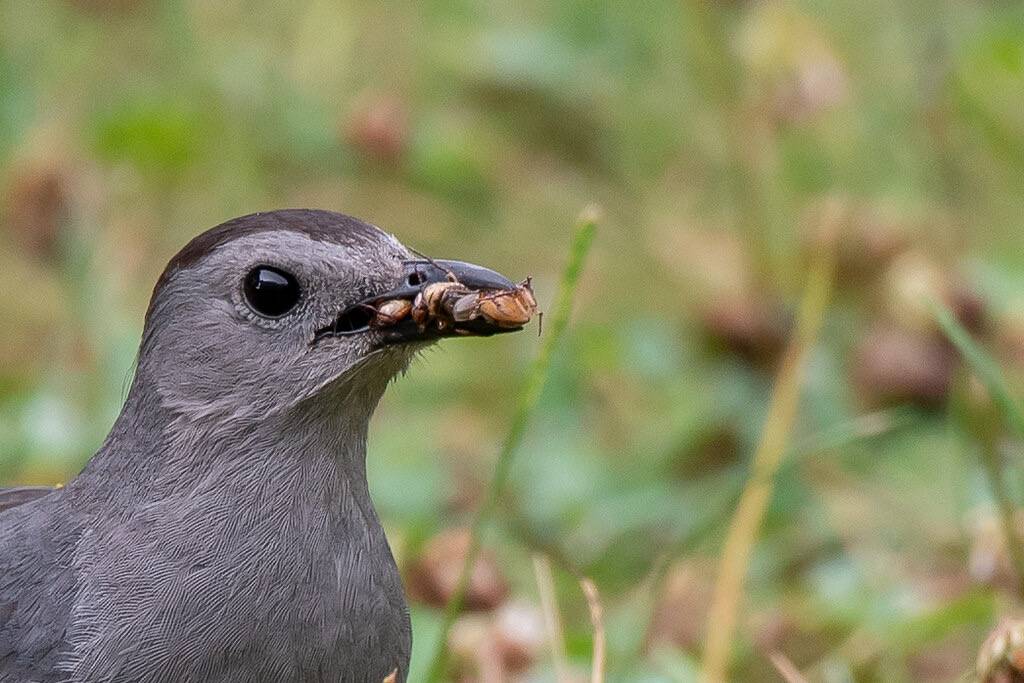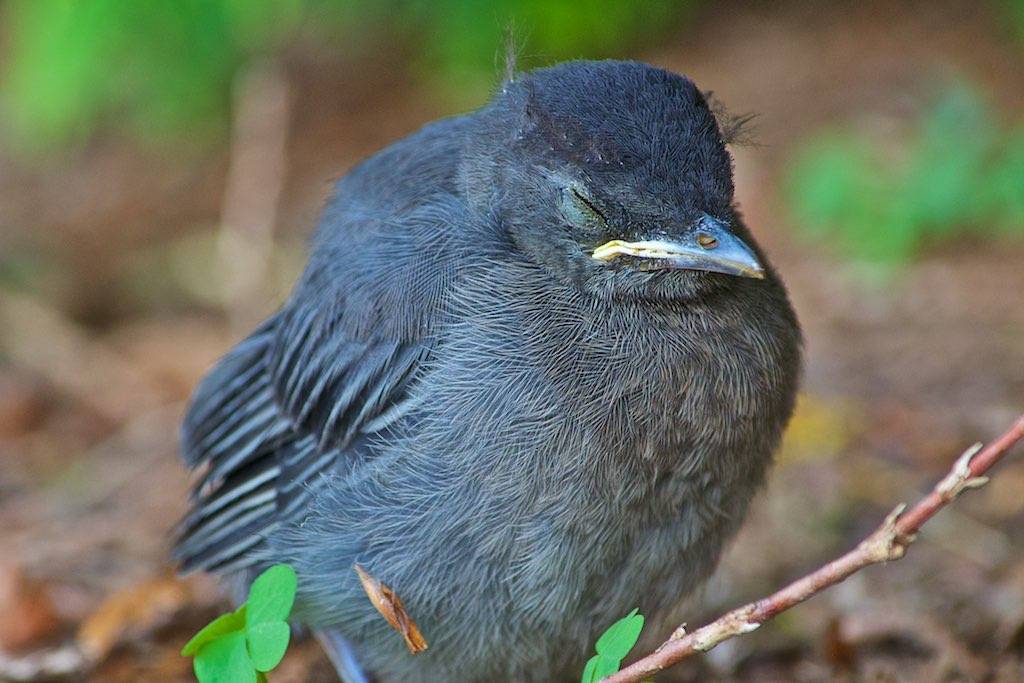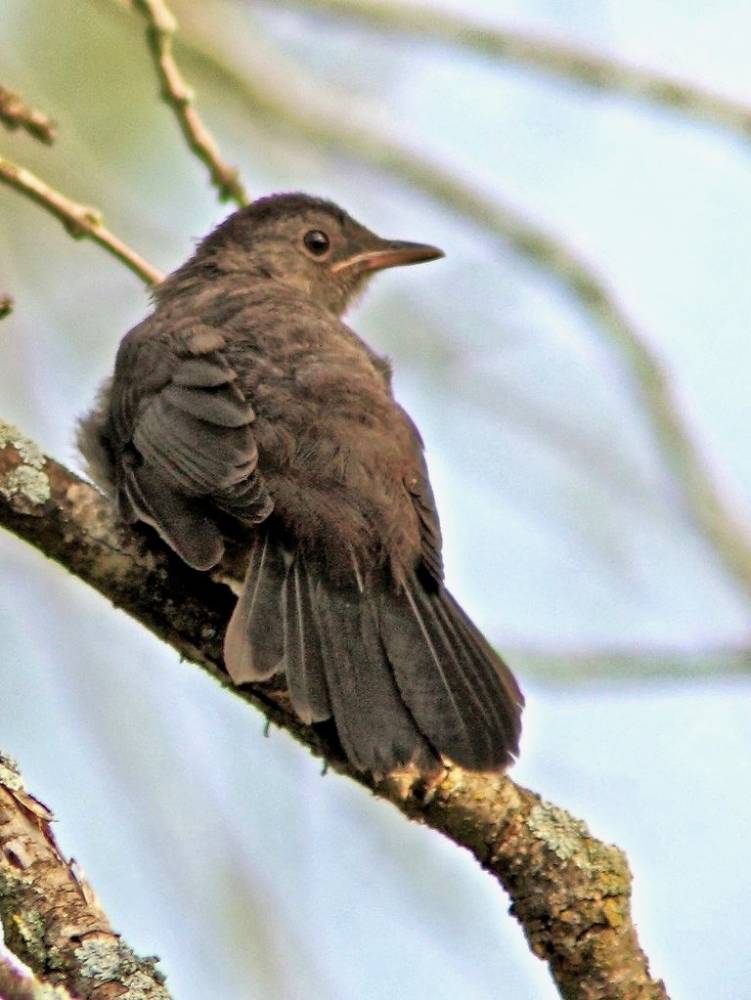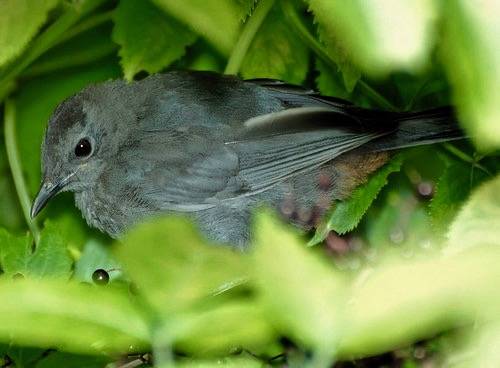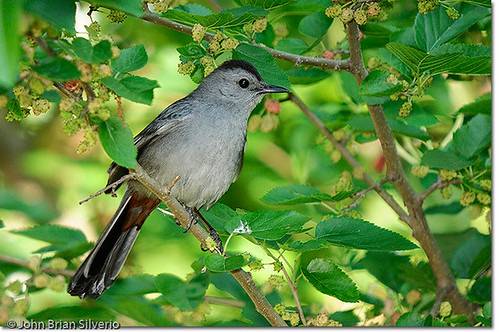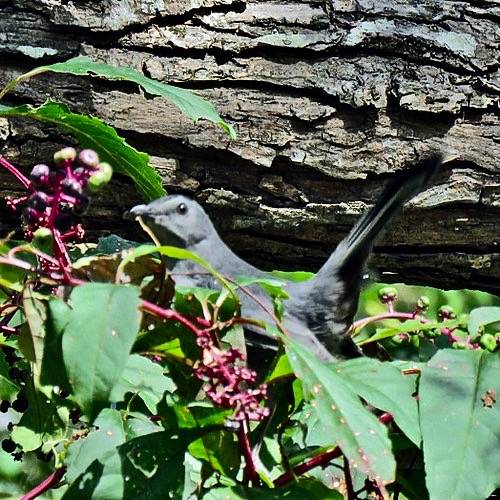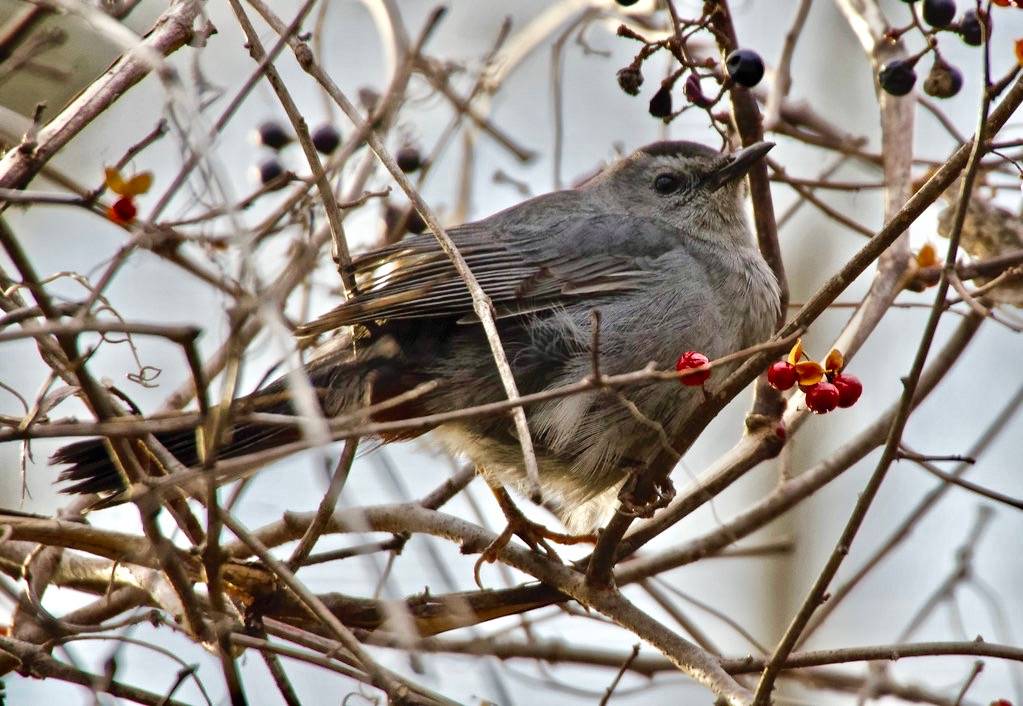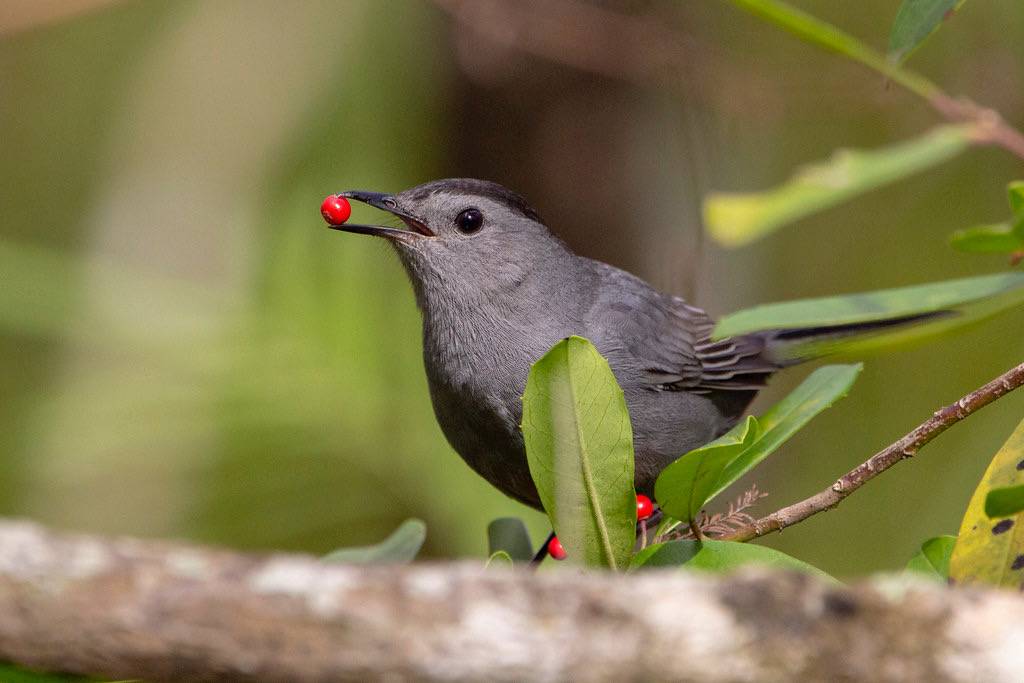Gray Catbird
During the warmer months of the year, the Gray Catbird can be heard even if not always seen along all the mainland trails at Salter Grove. Its distinctive cat-like mew is one of the easiest bird calls to remember. Its slate-gray plumage renders it almost invisible in the dense thickets where it prefers to spend most of its time.
Like its close relatives the Brown Thrasher and the Northern Mockingbird, it is also quite adept at mimicking other birds, stringing together the songs of several species to make its own song. Unlike other songbirds, however, the Gray Catbird sings hidden from view inside thick shrubbery rather than from a prominent perch.
The Gray Catbird arrives in mid-April to breed in the understory of the park and builds its stick nest in thick tangles of vegetation, often incorporating pieces of plastic. It forages for insects and spiders on the ground with its beak. It readily adds fruits and berries from both native (American holly, American pokeweed) and introduced (Asian bittersweet, white mulberry) plant species to its diet while breeding and in migration.
Catbirds have been reported to destroy the eggs of birds such as the American Robin and Song Sparrow. This aggressive tendency may partly explain why Gray Catbirds are not susceptible to brood parasitism by the Brown-headed Cowbird. The mottled eggs of cowbirds are also strikingly different from the turquoise-blue catbird eggs. When deposited, cowbird eggs are punctured and then ejected from the catbird nest.
The Gray Catbird breeds in most of North America east of the Rockies in habitats with dense thickets of shrubs and vines. They will even nest in suburban areas densely planted with shrubbery. Birds that breed in the northern regions winter in the southeast, Mexico, Central America and the Caribbean. It has been seen at Salter Grove as late as early November, but most are gone by the end of September.
For more information:
https://www.allaboutbirds.org/guide/Gray_Catbird
https://www.audubon.org/field-guide/bird/gray-catbird
https://nationalzoo.si.edu/migratory-birds/full-annual-cycle-migratory-birds
https://abcbirds.org/bird/gray-catbird/
https://en.wikipedia.org/wiki/Gray_catbird
http://www.biokids.umich.edu/critters/Dumetella_carolinensis/

